User interface
Spice's user interface (UI) enables merchants to interact with Spice and its settings. This guide covers how to use each part of this UI.
Spice's UI handles almost the entire pairing and transaction process, allowing your POS's UI to be as simple as possible. Your POS's UI must enable merchants to start transactions, and then let Spice handle the rest.
Open the Spice UI
When Spice is running, you will find a Spice icon in your Windows system tray. Click this icon to open the UI.

'EFTPOS terminal pairing' page
When Spice is not paired with an EFTPOS terminal, the Terminals>EFTPOS terminal pairing page will contain options to pair with one. To learn how to use this, see the Install and pair guide.
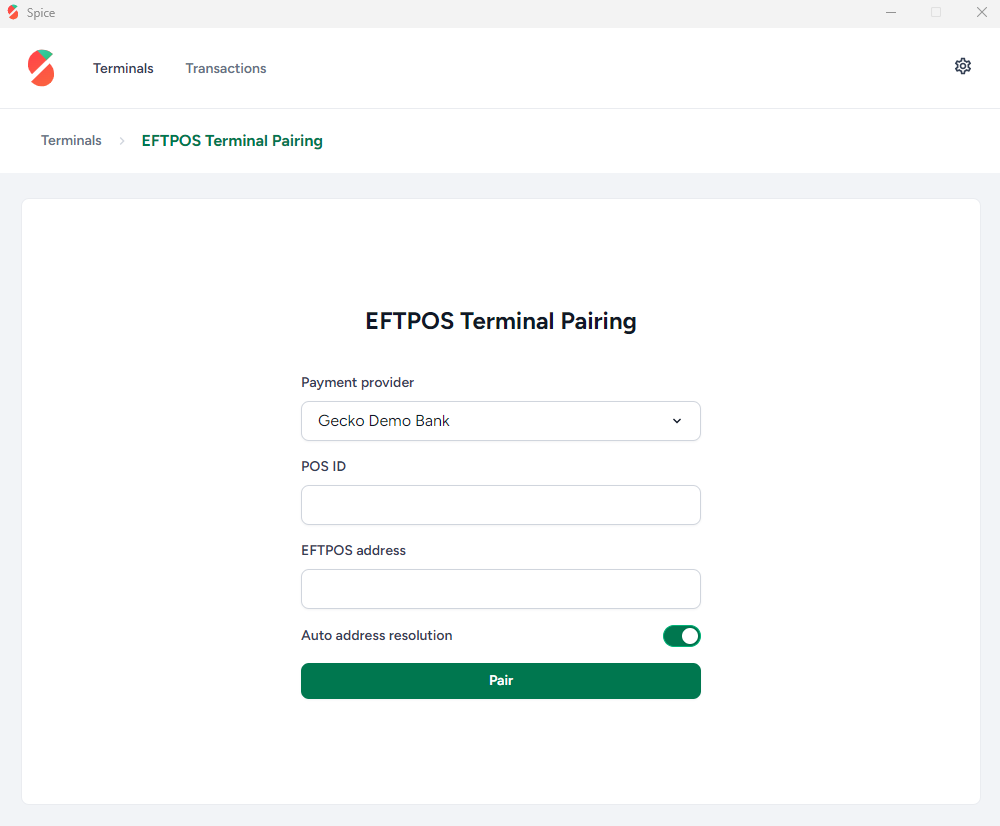
The 'Status' page
Once an EFTPOS terminal has been paired, the Status page displays key information about this terminal.
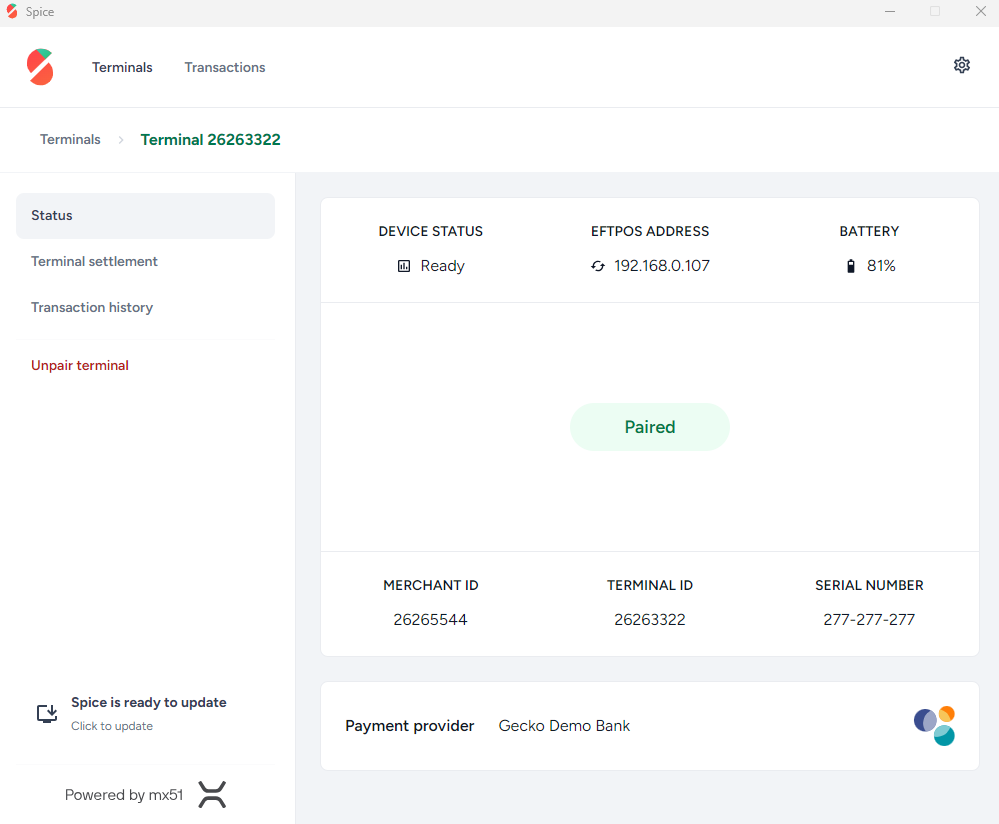
The information on this page includes the following.
| Field | Description |
|---|---|
| Connected | This indicates that Spice is paired with the EFTPOS terminal. |
| Device status | This indicates the status of the EFTPOS terminal: • Ready — it is ready to process a transaction. • Busy — it is currently processing a transaction and must complete this before it can process another. • Pairing — it is in the process of pairing with Spice. |
| EFTPOS Address | The IP address of the paired EFTPOS terminal. There is also an icon (🔗) which if green indicates that auto-address resolution is enabled, and if grey, indicates it is disabled. |
| Merchant ID (MID) | A unique ID that identifies the merchant. It is issued by the bank or acquirer. |
| Terminal ID (TID) | A unique ID that identifies the EFTPOS terminal. |
| Serial number (SN) | A unique ID that identifies the physical device of the EFTPOS terminal. For example, if a merchant accidentally drops an EFTPOS terminal and it breaks, they must replace it with a new device. The new device will have a new serial number but will use the same terminal ID. |
The 'Transactions' page
On this page, the merchant can view a list of the 10 most recent transactions per terminal. Click on each transaction to view its merchant receipt.
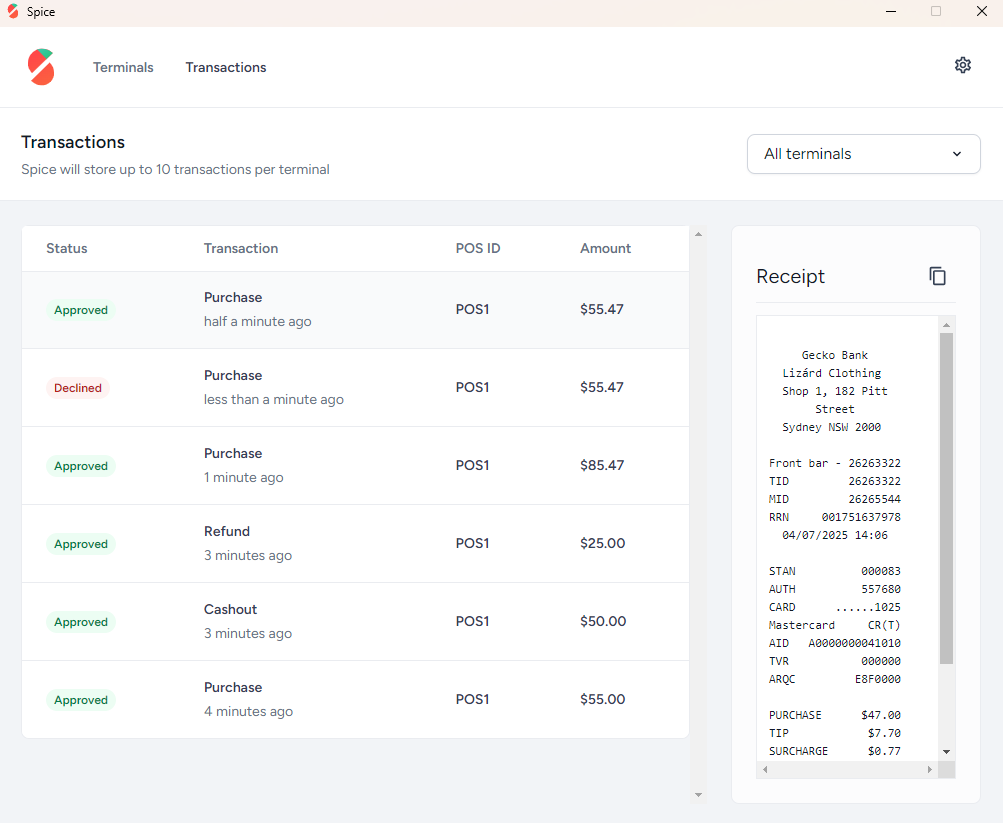
Here are the meanings of the three-letter codes on the receipts.
| Code | Description |
|---|---|
| TID (Terminal ID) | A unique number identifying the EFTPOS terminal. |
| MID (Merchant ID) | A unique number identifying the merchant. |
| RRN (Retrieval Reference Number) | A number used by banks for different purposes. |
| STAN (System Trace Audit Number) | A number identifying the communication message, for technical purposes. |
| AUTH (Authorisation Code) | A number that proves authorisation by the bank. |
| CARD (Card Number) | The number of the customer's card used for the transaction. E.g. a credit card number. |
| AID (Application ID) | A number identifying the smart card application used for the transaction, for technical purposes. |
| TVR (Terminal Verification Result) | A bit-field (0s and 1s) from the EFTPOS terminal providing information about the transaction's result. |
| ATC (Application Transaction Counter) | An identifier of the transaction used to prevent fraud. |
| TOT (Total) | The total amount of the transaction. |
The 'Settlement' page
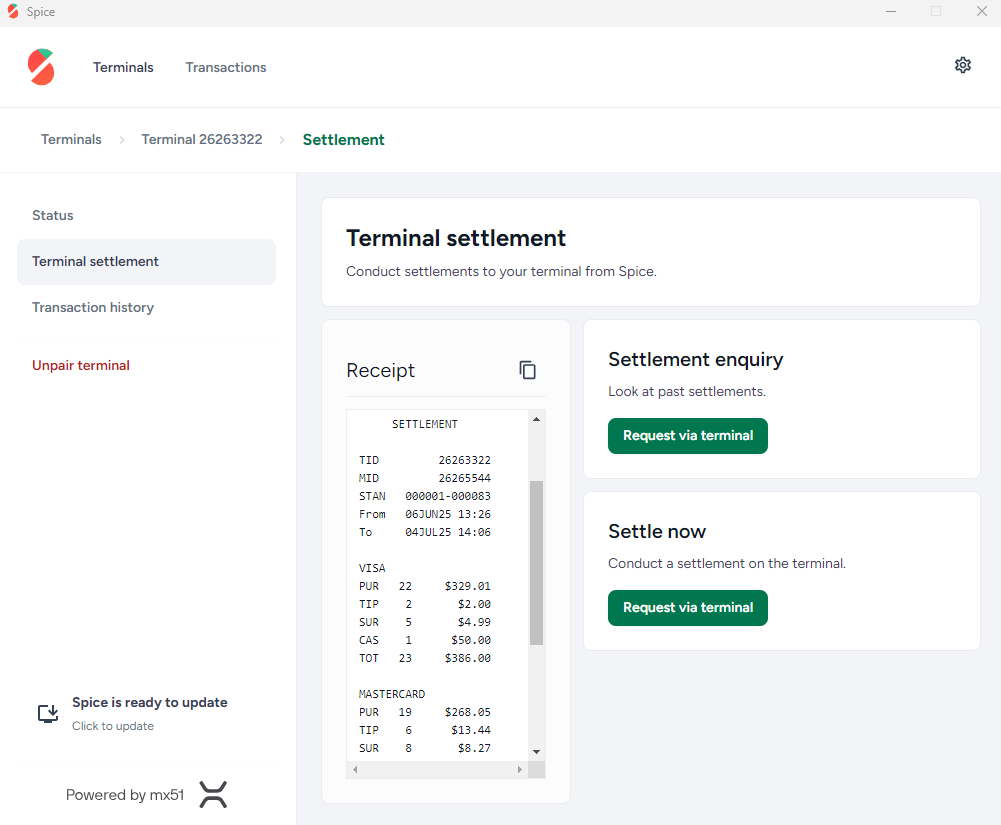
On this page, merchants can make a settlement enquiry or settle today's transactions with their bank.
Learn more about settlement and settlement enquiries.
The 'Settings' page
This is where the merchant can configure Spice to their needs. It contains several tabs, as follows.
General
On this tab, take note of the following settings.
| Setting | Description |
|---|---|
| Theme | The theme of the transaction pop-ups. You can change this to reflect the theme of your POS's UI |
| Auto close successful transactions and Auto close failed transactions | When these settings are enabled, transaction pop-ups will be automatically closed when the transaction succeeds/fails without needing interaction from the merchant. They can be auto-closed either immediately or after two seconds. |
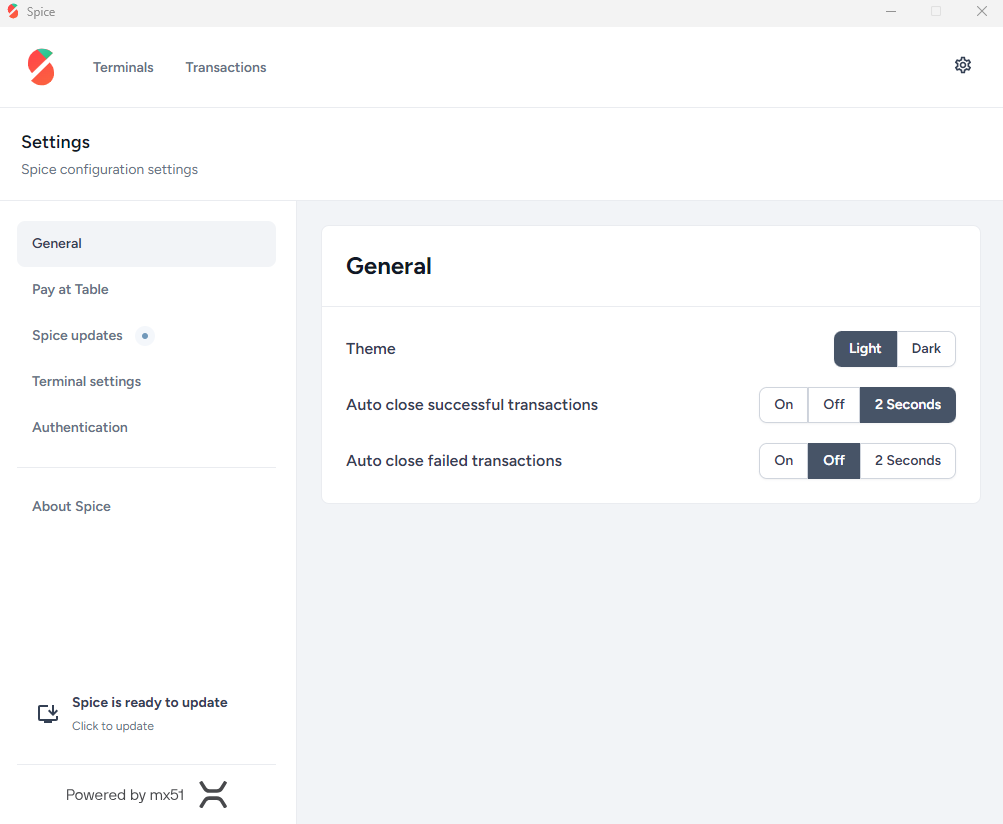
Pay at table
See the Pay at table guide.
Spice updates
On this tab, merchants can update Spice to the latest version, or uninstall Spice.
Update
This section displays the version number of the Spice application and has either a message confirming that this is the latest version with a Check for updates button to manually check if a new version is available or an Update button when a new version is available.
Note that updates are installed at the same location as the initial installation: %APPDATA%\Spice\bins
Uninstall
This is where to go to uninstall Spice (since it is not installed globally) and clean up its system files. To do so, select Uninstall Spice.

Terminal settings
General
On this tab, take note of the following settings.
| Setting | Description |
|---|---|
| Developer mode | When enabled, Spice will communicate with the developer environment (or 'sandbox' or 'test' environment) of the EFTPOS terminal. This should not be enabled when using Gecko Bank. It should only be used with other EFTPOS terminals. |
| Print customer receipt from terminal and Print merchant receipt copy | When these settings are enabled, transaction pop-ups will be automatically closed when the transaction succeeds/fails without needing interaction from the merchant. They can be auto-closed either immediately or after two seconds. |
| Confirm customer signature from terminal | When enabled, the EFTPOS terminal (instead of the POS machine) will print the 'receipt to sign' for the customer and will prompt the merchant to confirm the signature. |
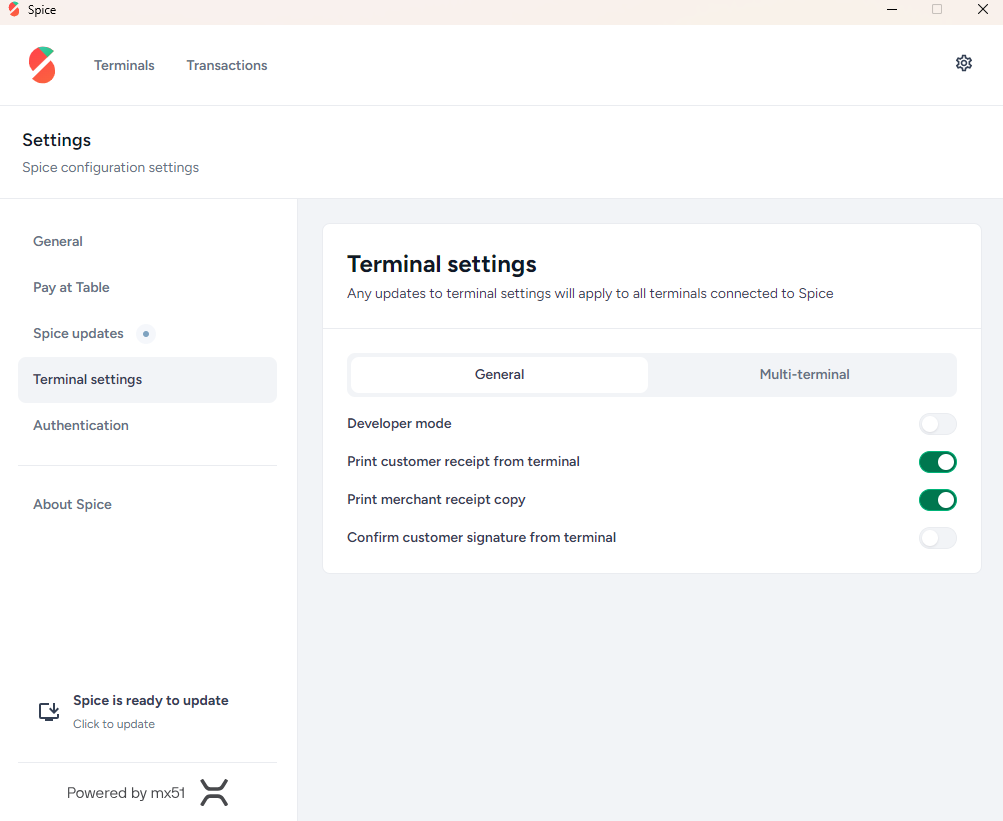
Multi-terminal
The Multi-terminal settings will only be available when 2 or more terminals are paired with Spice. On this tab, take note of the following settings.
| Setting | Description |
|---|---|
| Use first paired terminal | The default setting where Spice will use the first paired terminal to process transactions. |
| Use default terminal | The merchant can select the default terminal to process transactions. |
| Prompt for each transaction | The merchant will be prompted with each transaction to choose which terminal should process the payment. |
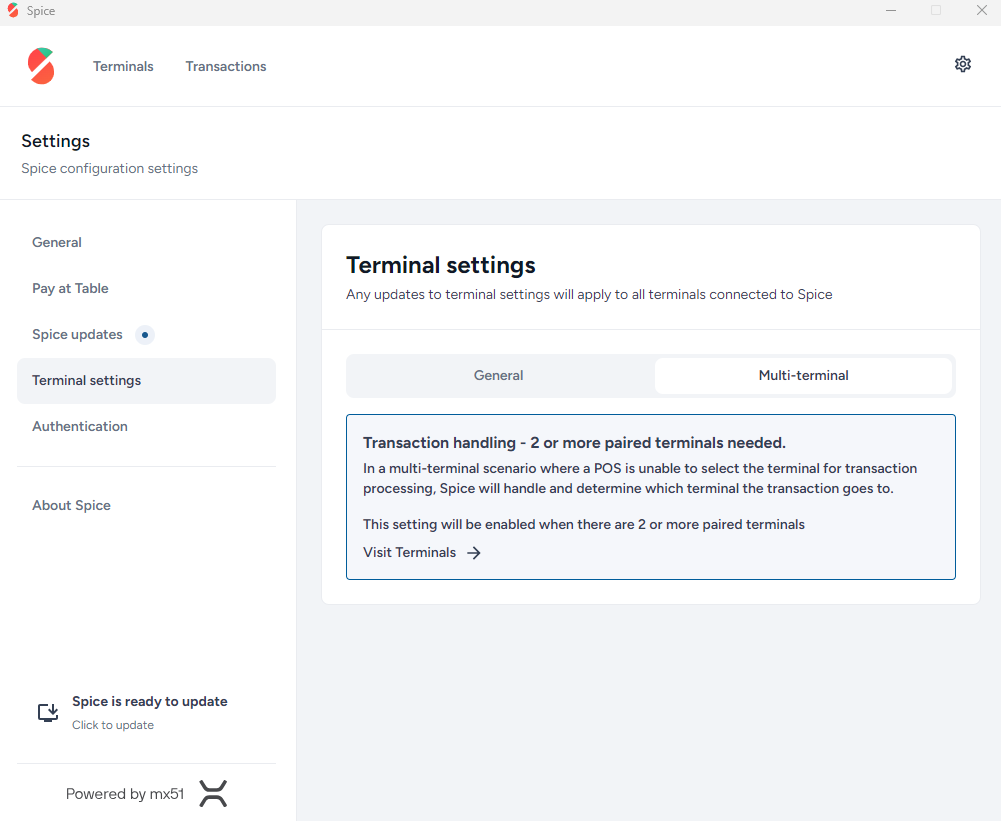

About Spice
View the Spice EULA.
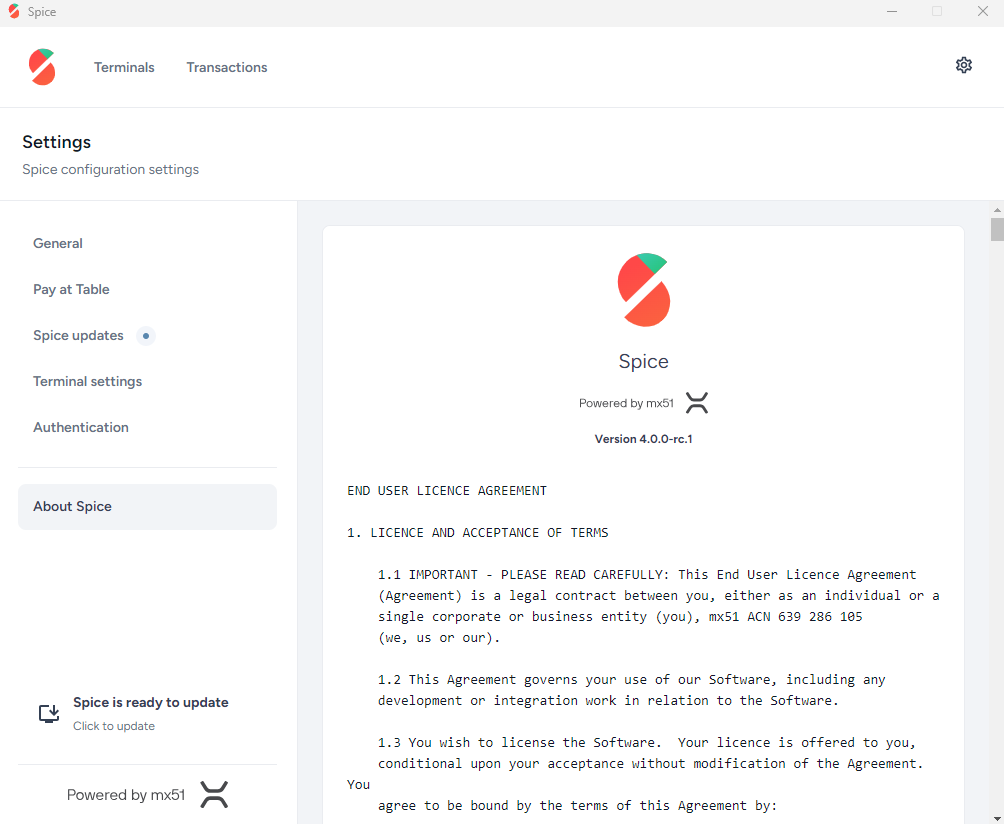
The transaction pop-up
When a transaction is in progress, the status of the transaction and buttons to interact with it are displayed in a pop-up.

Updated about 1 month ago